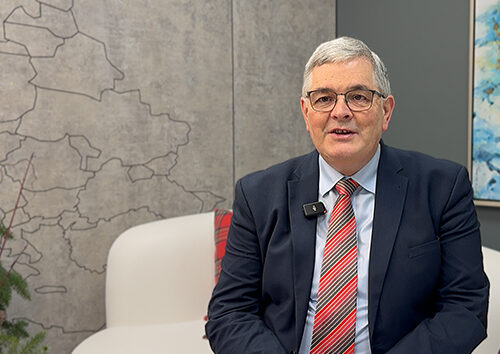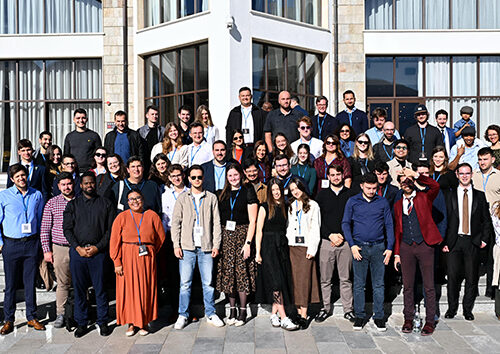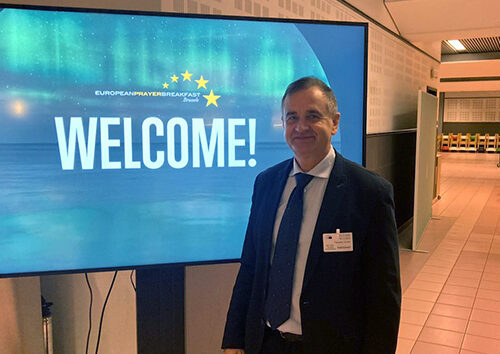30 March 2020 | Oslo, Norway [Tor Tjeransen]
It is hard to believe that something so small can cause so much damage!
Over recent weeks, the news has been flooded with reports about COVID-19 and the huge problems this pandemic is creating across the world. But how much do you know about the miniscule culprit responsible for all the chaos?
Viruses are not living organisms. They do not breathe, and they have no metabolism. These two factors need to be present in order to be defined as a living organism. In addition, viruses are not capable of reproducing on their own, they require a host organism. We will get back to how they reproduce.
First a little bit about the name and size of the virus responsible for COVID-19. Initially the virus was simply known as a new or novel coronavirus. Later experts at the International Committee on Taxonomy of Viruses gave it a proper name: SARS-CoV-2. That name is filled with meaning. The first part of the name is the acronym for Severe Acute Respiratory Syndrome and tells us it is capable of creating serious infections of the human respiratory system. The second segment of the name simply identifies it as a coronavirus, and the numeral two is just to differentiate this virus from the one that caused the SARS epidemic in 2003.
You know the virus is tiny, but how small is it? It is minute. Metres, centimetres and millimetres do not help us much in describing the size of the SARS-CoV-2 virus. The size is between 60 and 120 nanometres. That is between 0,000 000 060 metres and 0,000 000 120 metres. This means that it would be possible to fit between 50 and 275 million virus particles inside the space of a square millimetre, if the viruses were all in one layer.
Many scientists around the globe are working hard to find out more about the virus and how it behaves. This is a collaborative effort involving interdisciplinary research in many different countries. For several years, China has been at the forefront in research on viruses.
Dr Isabel Moraes is a Principal Research Scientist at the National Physical Laboratory in the United Kingdom. For much of her working life, she has been researching protein membrane structures in human cells at the atomic level. In order to visualise protein structures at the atomic level, Dr Moraes and her colleagues are dependent on the X-ray beams produced at National Synchrotrons Facilities such as the Diamond Light Source in the United Kingdom.
A synchrotron is a huge ring in which electrons are accelerated to near the speed of light. This produces a light source 10 billion times brighter than the sun. This light is directed into different beamlines, each one with its own X-ray wavelength characteristics. When crystallised protein samples are exposed to intense synchrotron light, scientists can obtain diffraction images that in turn allow them to solve (“visualised”) protein structures, such as proteins involved on the mechanism of action of the SARS-CoV-2 virus.
In a documentary released by the Geoscience Research Institute Dr Moraes explains the nature of her work and talks about how her research in biology strengthens her faith in a creator.
She explains that coronaviruses are quite specific and although there is some knowledge about their mode of action, the specific mechanisms involved as to how the virus penetrates human cells is not well understood. “This is what makes things very complicated,” says Moraes.
Scientists assume that the virus responsible for COVID-19 is behaving in the same way as the viruses active in the SARS and MERS epidemics. The corona virus has a number of spike proteins, also known as S proteins, on the outside. These spike proteins look like a crown. That is why these viruses are called corona viruses after the Latin word for crown.
The spike proteins present on the virus capsid (outer shell) bind to the human cell receptors called ACE2 (angiotensin-converting enzyme 2). This enzyme is involved in regulating blood pressure in our bodies.
“When the corona virus binds to the ACE2 receptors on the cell surface, a signal is sent to the cell, and the cell naively gives access to the virus,” Moraes explains. Inside the SARS-CoV-2 virus shell there are single-stranded RNA molecules that comprise the virus genome. Once inside the human cells, the virus releases its RNA and the human cells will mistakenly facilitate reproduction of the different components of the virus, such as viral proteins.
With the production of more and more virus particles inside human cells, the cell will realise that something wrong is going on and activate a pre-programmed self-destruction mechanism and die. The “suicide function” of cells is a normal process in our bodies. This process called apoptosis is a mechanism that protects us from abnormal cell development like cancer cell growth. It is estimated that between 50 and 70 billion cells die daily in adults due to this process. However, when viral infected human cells self-destruct, they have already helped the invading virus to multiply many times and now release the new viral particles.
Much of the current research on the SARS-CoV-2 virus and the associated COVID-19 disease centres on how to inhibit the ACE2 receptors in human cells to give access to the virus. Until researchers find a method for doing that, our best protection is to prevent the virus from entering our bodies through the mucous membrane primarily of the eyes, mouth or nose.
Protect yourself from the virus by these measures:
- Good cough etiquette and good hand hygiene, and try to avoid touching your face.
- People who live together can be in normal contact.
- Avoid shaking hands and avoid kissing and hugging people you do not live with.
- Keep a good distance from others, both at work, outside and other places you visit.
- Limit the number of people you have close contact with, or are visited by, to a few at a time.
- Follow the directions of your local health authorities.
The original version of this article appeared on the Norwegian Adventist website.
tedNEWS Staff: Victor Hulbert, editor; Deana Stojković, associate editor
119 St Peter’s Street, St Albans, Herts, AL1 3EY, England
E-mail: [email protected]
Website: www.ted.adventist.org
tedNEWS is an information bulletin issued by the communication department of the Seventh-day Adventist Church in the Trans-European Division. Readers are free to republish or share this article with appropriate credit including an active hyperlink to the original article.

![Colourised scanning electron micrograph of an apoptotic cell (blue) heavily infected with SARS-COV-2 virus particles (yellow), isolated from a patient sample. Image captured and colour-enhanced at the NIAID Integrated Research Facility (IRF) in Fort Detrick, Maryland. ]Photo credit: NIAID. CC BY] Colourised scanning electron](https://ted.adventist.org/sitenews/wp-content/uploads/2020/03/images_news-2020_Colourised_scanning_electron.jpg)
![This illustration has been reproduced around the globe during the Covid-19 crisis. It was created at the Centers for Disease Control and Prevention (CDC), and reveals ultrastructural morphology exhibited by coronaviruses. Note the spikes that adorn the outer surface of the virus, which impart the look of a corona surrounding the virion, when viewed electron microscopically. The colours have been added for clarity. [Photo credit: CDC/Alissa Eckert, MS; Dan Higgins, MAMS. CC0] Coronavirus crown](https://ted.adventist.org/sitenews/wp-content/uploads/2020/03/images_news-2020_Coronavirus-crown.jpg)
![This 3D medical animation of a coronavirus shows the spike proteins on the outer surface and the RNA protein inside the virus. [Photo credit: www.scientificanimations.com. CC BY-SA] 3D medical animation coronavirus structure](https://ted.adventist.org/sitenews/wp-content/uploads/2020/03/images_news-2020_3D_medical_animation_coronavirus_structure.jpg)


